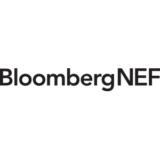The sustainable finance market surged in 2018, with a record $247 billion worth of sustainability-themed debt instruments raised during the year, according to research company BloombergNEF (BNEF). Green bonds issuance amounted to $182.2 billion in 2018, whereas one new product, sustainability-linked loans reached $36.4 billion.
The sustainable debt market is comprised of labelled bonds and loans that finance projects with green benefits, social benefits or a mixture of both. Many investors target these debt offerings in order to meet their own objectives or mandates on environmental and social impact.
The focus of the market has historically been on green bonds, which were first used by European banks around 2007 to finance clean energy projects and have since also been issued by governments and a wide range of industrial businesses. While green bonds continue to make up the largest part of the market, attention is now shifting to a broader range of sustainable bonds and loans.
As a result, growth in green bonds slowed to 5% in 2018 YoY compared to 68% in 2017 while sustainability-linked loans, surged 677%. Sustainability-linked loans are term loans or credit facilities that come with a sustainability pricing mechanism. The pricing mechanism is typically tied to the sustainability score or performance of the borrower, which can go up or down.
For example, in November 2018, French electricity utility EDF agreed to a 4 billion-euro facility with pricing indexed to the group’s key sustainability performance indicators. If the company underperforms against its targets, then the margin of the debt facility will increase, and if it outperforms, the margin will decrease.
Dan Shurey, head of green and sustainable finance at BNEF, said: “More investors in debt markets are demanding dual social and green benefits, and more investors are demanding customized sustainability options. The markets are responding, with new products emerging such as green loans, green commercial paper and sustainability-linked loans. This helped to make 2018 the seventh consecutive year of record issuance in sustainable finance since the green bond market began.”
Corporations are not the only ones pioneering sustainable debt – a growing number of governments are issuing their own debt instruments with a sustainable label, meaning that the money raised will be earmarked to go into environmental or social projects.
Aiman Mallah, sustainable finance research analyst at BNEF, said: “Green sovereign debt hit $17.6 billion in 2018 – a 64% increase from 2017, thanks to inaugural issuance from countries like Belgium and Ireland, as well as further taps on the French sovereign bond. These governments are raising the debt to meet national and international environmental goals, particularly on climate change mitigation and adaptation.”
New policies to scale sustainable finance proliferated in 2018, as governments vied to become international hubs for these investment products. In the year, Hong Kong and Japan established programs to incentivize market growth, while the European Commission made progress to create a green bond standard.
The two leaders in sustainable debt issuance in 2018 were the U.S. and China. In the U.S., some $45.4 billion of sustainable debt products came to market, far surpassing China’s $25.5 billion. Mortgage giant Fannie Mae accounted for the vast majority of the U.S. issuance, thanks to its ambitious green financing programs. Removing green commercial mortgage backed securities from the picture, the U.S. total for 2018 stands at $25.6 billion – remarkably similar to volumes seen in China.
BNEF will publish an in-depth review of the sustainable finance market in its first annual Sustainable Finance Market Outlook at the end of January.





